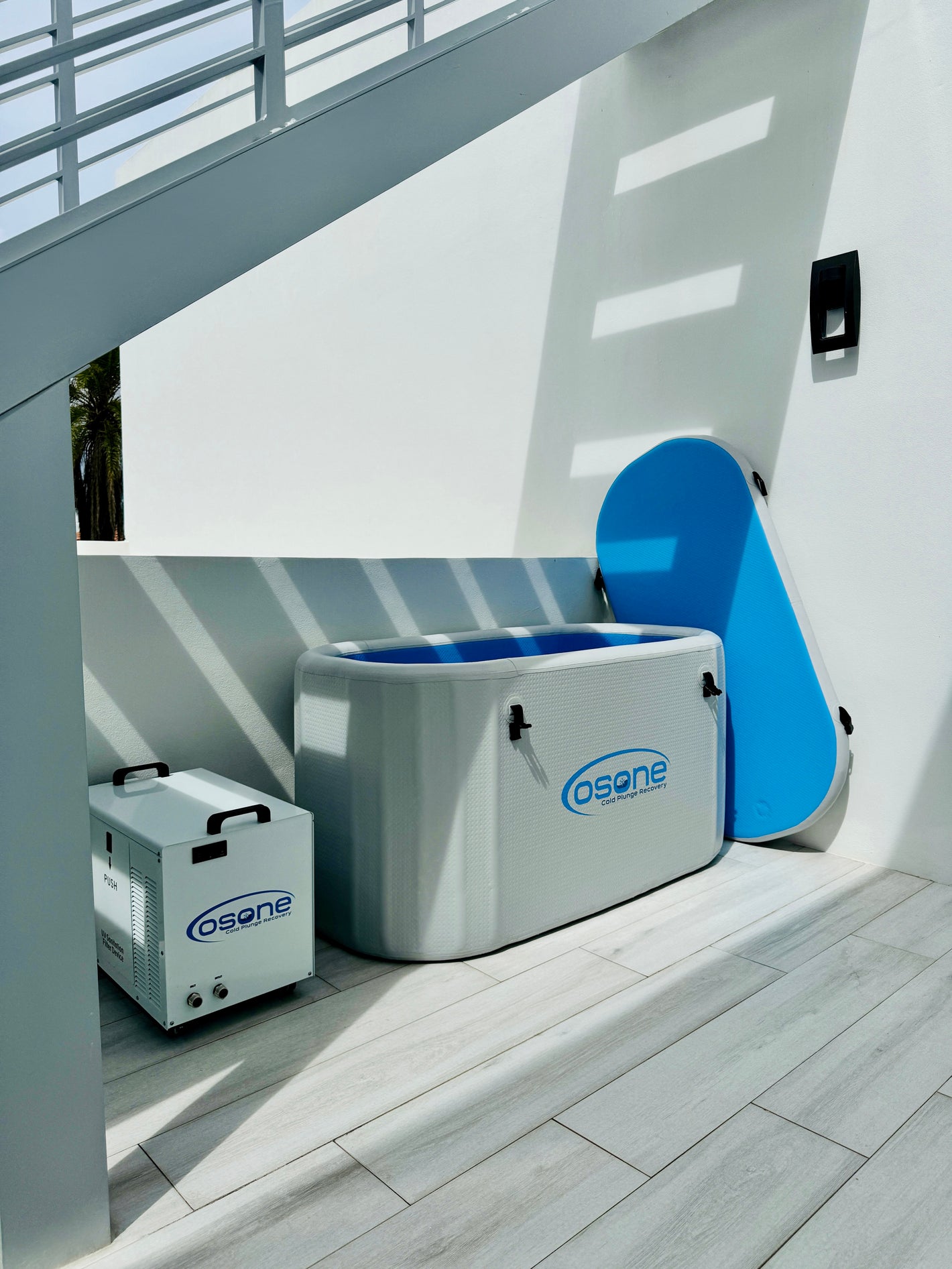The postpartum period, often called the "fourth trimester," is a transformative time for new parents. It involves physical, emotional and mental recovery for mothers after childbirth as they adapt to their new role. For the fathers, the support for the new mother and child can also bring mental fatigue along with muscle soreness due to diaper changes and feedings as they navigate through their new routine.
Cold plunging, a practice that involves immersing the body in cold water, has gained attention as a therapeutic tool for recovery. Cold plunging involves immersing the body in water temperatures ranging from 59°F all the way down to 37°F for periods of time ranging from 3 to 10 minutes. The practice activates the body’s natural stress response, leading to physiological and psychological benefits.
While commonly used by athletes for recovery, cold plunging is increasingly explored for mental and physical health benefits in broader contexts, including postpartum recovery.
For women, the postpartum period involves significant physical and emotional changes. Common challenges include:
- Physical Recovery: Healing from labor, whether vaginal or cesarean delivery.
- Hormonal Changes: Fluctuations that can lead to mood swings, depression, or anxiety.
- Fatigue: Sleep deprivation and the demands of caring for a newborn.
- Muscle Pain and Inflammation: Resulting from delivery and postpartum physical strain.
This article explores the potential benefits of cold plunging for postpartum recovery as well as the precautions to consider.
Benefits of Cold Plunging for Postpartum Recovery
Five Benefits to help you feel more like yourself:
Reduces Inflammation and Swelling - Cold water immersion constricts blood vessels and reduces blood flow to the area, which helps decrease inflammation and swelling. For postpartum women, this can support recovery from the physical strain of childbirth. Men experiencing muscle soreness or fatigue from supporting their partners or taking on additional responsibilities may also benefit.
Enhances Mood and Reduces Stress - Cold plunging triggers the release of endorphins and dopamine, the body’s “feel-good” hormones. For postpartum women, this can help alleviate symptoms of the "baby blues" or mild postpartum depression. Fathers and partners may also find relief from stress and anxiety through this natural mood boost.
Boosts Circulation - The initial constriction of blood vessels during cold exposure is followed by increased blood flow as the body warms up. Improved circulation can accelerate healing for postpartum women and aid in recovery from physical exertion for both parents.
Improves Sleep - Cold plunging can promote better sleep quality by calming the nervous system and reducing cortisol levels, the body’s primary stress hormone. For new parents dealing with fragmented sleep, even modest improvements can make a significant difference.
Strengthens Mental Resilience - The controlled stress of cold exposure helps build mental resilience, which can be particularly beneficial during the emotionally taxing postpartum period. It fosters a sense of accomplishment and control, helping both parents feel more capable of managing challenges.
Practical Tips for Cold Plunging During Postpartum
5 tips to help guide you through the process:
Use a Home Setup - A portable cold plunge tub or even a bathtub filled with cold water and ice can provide a convenient option for new parents with limited time.
Set a Routine - Incorporate cold plunging into a daily or weekly routine that works around the baby’s schedule.
Make It a Shared Activity - Partners can support each other by alternating time in the plunge or practicing together (if space allows), fostering a sense of teamwork.
Pair with Other Recovery Practices - Combine cold plunging with stretching, yoga, or mindfulness exercises for a holistic approach to recovery.
Monitor Your Response - Track how your body feels before and after plunging. Adjust frequency, duration, or temperature as needed.
Precautions for Postpartum Women
While cold plunging offers several benefits, postpartum women should approach it with caution due to the following considerations:
Consult a Healthcare Provider - Before starting cold plunging, women should consult their doctor, especially if they have had a cesarean section, stitches, or complications during delivery. Cold exposure may not be suitable for women with open wounds or infections.
Start Gradually - Postpartum women should ease into cold plunging with shorter immersion times and slightly warmer temperatures to avoid shock or discomfort.
Avoid Overexertion - The postpartum body is still healing, and overexposure to cold can be taxing. Listen to your body and stop if you feel unwell.
Monitor Hormonal Sensitivity - Hormonal fluctuations in the postpartum period can heighten sensitivity to cold, so adjust the practice based on comfort levels.
Stay Hydrated and Warm - After cold plunging, rehydrate and ensure you warm up quickly to avoid prolonged cold exposure, which can lead to chills or fatigue.
Cold plunging may not be suitable for everyone during the postpartum period - Avoid cold plunging if:
- You have a medical condition such as cardiovascular issues, Raynaud's disease, or nerve damage.
- You experience excessive discomfort or adverse reactions after plunging.
- You are unsure about the safety of cold plunging in your specific situation—always consult a healthcare professional first.
Final Thoughts
Cold plunging can be a valuable tool for postpartum recovery, offering physical, mental, and emotional benefits for both women and men. While it’s not a one-size-fits-all solution, its ability to reduce inflammation, boost mood, and improve resilience makes it an appealing option for new parents navigating the challenges of this transformative time.
As with any recovery practice, listening to your body, starting slowly, and consulting with a healthcare provider are essential to ensure safety and effectiveness. By integrating cold plunging thoughtfully into your postpartum routine, you can enhance your well-being and tackle the demands of parenthood with renewed energy and focus.






